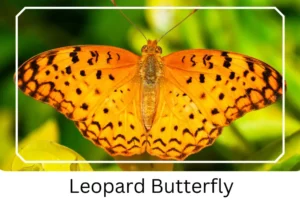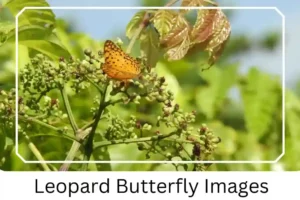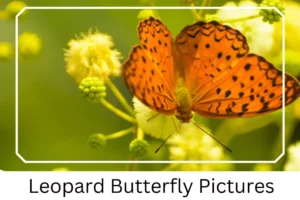Leopard (Phalanta phalantha)
The Leopard Butterfly, scientifically known as Phalanta phalantha, embodies a spectacle of nature’s beauty with its vibrant colors and dynamic presence. This species, found in various subspecies, thrives in sunlit environments, actively avoiding shaded areas. Its preference for the warmth of the sun complements its energetic behavior, as it flits from one flower to another in a relentless search for nectar.
Scientific Classification
- Family: Nymphalidae
- Genus: Phalanta
- Common names: Common leopard butterfly
- Scientific Name: Phalanta phalantha
Overview
Belonging to the Nymphalid family, the Leopard Butterfly is a common sight in many parts of the world, adorned with an eye-catching bright orange hue. This butterfly is not just a feast for the eyes but also plays a crucial role in the ecosystem, acting as a pollinator. Its life cycle, from a caterpillar to a splendid adult butterfly, showcases the marvel of metamorphosis, making it a subject of interest for both scientists and nature enthusiasts.
Description and Identification
Caterpillar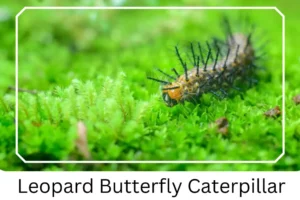
The journey of the Leopard Butterfly begins with its caterpillar stage, where it exhibits a bright green color. Its body is adorned with small, black, antenna-like spikes, giving it a distinctive look. These larvae feed on the host plants, preparing for the next stage of their lifecycle.
Pupa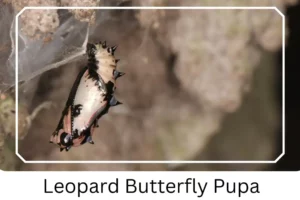
Transitioning into the pupa stage, the caterpillar forms a cocoon ranging from greenish to yellow-green in color, measuring 14 to 18 mm in length. This crucial stage involves the caterpillar hanging by a silk pad, without the need for additional support, as it metamorphoses into an adult butterfly.
Adult Butterfly
Upon reaching adulthood, the Leopard Butterfly showcases its majestic colors and patterns.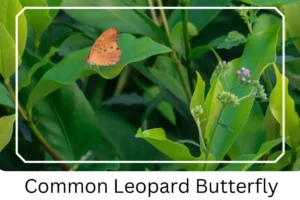

Sexual Dimorphism: This species exhibits subtle differences between males and females, with males often displaying more vibrant colors to attract mates and assert territory.
Color and Appearance: The forewings dazzle with a bright tawny orange to yellowish orange or tan-orange shade, embellished with black to dark brown spots and lines. The hind wings, though smaller, are equally decorative.
Average Wingspan: The wingspan of an adult Leopard Butterfly ranges between 50 to 60 mm, allowing for fast and agile flight.
Flight Pattern: Characterized by a fast, active, and sharp flying style, this butterfly is a marvel to watch in motion.
Eggs
The reproductive cycle of the Leopard Butterfly begins with the laying of pale yellowish, globular-shaped eggs. These eggs are laid individually, showcasing the intricate care the female invests in the next generation.
Quick Facts | |
| Distribution | This butterfly graces many regions, from the hilltops of Sri Lanka and the Himalayas to Sub-Saharan Africa and the Philippines. |
| Habitat | Favored habitats include urban gardens and grass fields rich in flowering plants like tridax, Lantana camara, and marigold. |
| Host Plants | It prefers rukam asam and weeping willow, among others, for its larvae. |
| Adult Diet | Adults feed on nectar from flowers and fermenting fruits, showcasing their preference for a varied diet. |
How to Identify Leopard Butterfly?
Identifying a Leopard Butterfly can be both fascinating and educational. Look for the vibrant tawny orange wings with distinctive black to dark brown spots, a characteristic feature of this species. The wingspan, ranging from 50 to 60 mm, combined with its unique flight pattern, makes it stand out. Observing the butterfly’s behavior, such as its tendency to feed on specific flowers like tridax and Lantana, or its active avoidance of shade, can also aid in identification. Recognizing the sexual dimorphism present in this species adds another layer to the identification process, with males typically showcasing more pronounced colors. Understanding these key features can enhance your ability to identify the Leopard Butterfly in its natural habitat.
Did You Know?
- The Leopard Butterfly’s males exhibit territorial behavior, particularly evident during the mating season, which is fascinating to observe.
- Besides their known preferences, these butterflies also enjoy nectaring on flowers such as thistles, meyenia laxiflora, and gymnosporia montana, showcasing their diverse palate.
Conclusion
The Leopard Butterfly, with its vivid colors, dynamic flight, and intriguing life cycle, stands as a testament to the diversity and complexity of nature. Its presence across various landscapes highlights its adaptability and the crucial role it plays in the ecosystem. Observing and understanding this species not only enriches our knowledge of biodiversity but also fosters a deeper appreciation for the intricate connections within nature.
Leopard Butterfly Pictures

Scientific Classification

- Family: Nymphalidae
- Genus: Phalanta
- Common names: Common leopard butterfly
- Scientific Name: Phalanta phalantha

